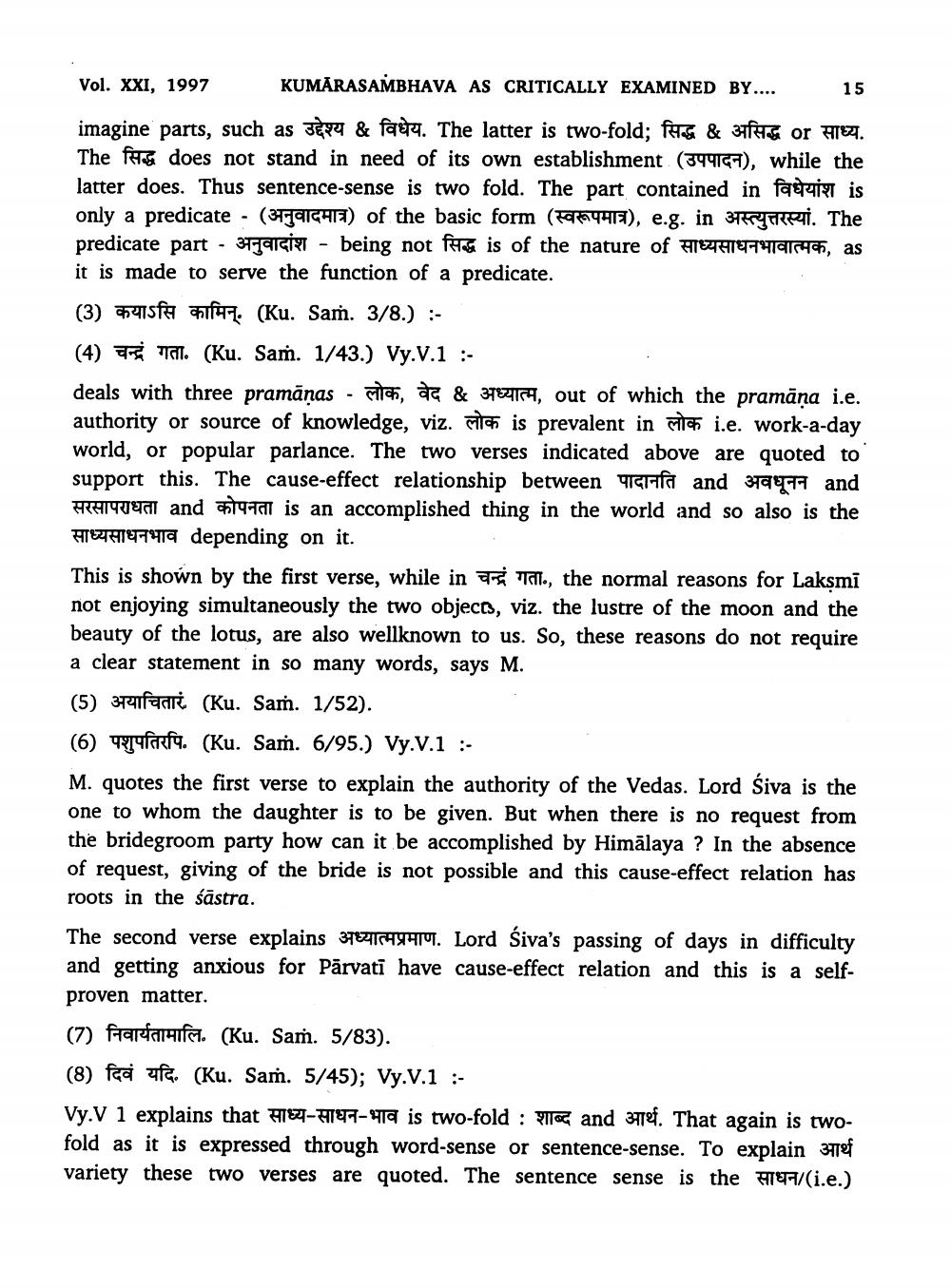________________
Vol. XXI, 1997 KUMĀRASAMBHAVA AS CRITICALLY EXAMINED BY.... 15 imagine parrs, such as उद्देश्य & विधेय. The latter is two-fold; सिद्ध & असिद्ध or साध्य. The these does not stand in need of its own establishment (394167), while the latter does. Thus sentence-sense is two fold. The part contained in facit is only a predicate - (अनुवादमात्र) of the basic form (स्वरूपमात्र), e.g. in अस्त्युत्तरस्यां. The predicate part - अनुवादांश - being not सिद्ध is of the nature of साध्यसाधनभावात्मक, as it is made to serve the function of a predicate. (3) 415A . (Ku. Saṁ. 3/8.) :(4) . Ku. Sam. 1/43.) Vy.V.1 : deals with three pramāṇas - cilat, ata & 3782716H, out of which the pramāņa i.e. authority or source of knowledge, viz. n10 is prevalent in alte i.e. work-a-day world, or popular parlance. The two verses indicated above are quoted to support this. The cause-effect relationship between Yra and 37°C and सरसापराधता and कोपनता is an accomplished thing in the world and so also is the साध्यसाधनभाव depending on it. This is shown by the first verse, while in as a., the normal reasons for Laksmi not enjoying simultaneously the two objects, viz. the lustre of the moon and the beauty of the lotus, are also wellknown to us. So, these reasons do not require a clear statement in so many words, says M. (5) 3faari (Ku. Sam. 1/52). (6) Tyfarf9. (Ku. Sam. 6/95.) Vy.V.1 :: M. quotes the first verse to explain the authority of the Vedas. Lord Siva is the one to whom the daughter is to be given. But when there is no request from the bridegroom party how can it be accomplished by Himālaya ? In the absence of request, giving of the bride is not possible and this cause-effect relation has roots in the śāstra. The second verse explains 3724164410. Lord śiva's passing of days in difficulty and getting anxious for Pārvati have cause-effect relation and this is a selfproven matter. (7) farefquifct. (Ku. Saṁ. 5/83). (8) fadi afc. (Ku. Saṁ. 5/45); Vy.V.1 :: Vy.v 1 explains that साध्य-साधन-भाव is two-fold : शाब्द and आर्थ. That again is twofold as it is expressed through word-sense or sentence-sense. To explain 377ef variety these two verses are quoted. The sentence sense is the a/i.e.)




